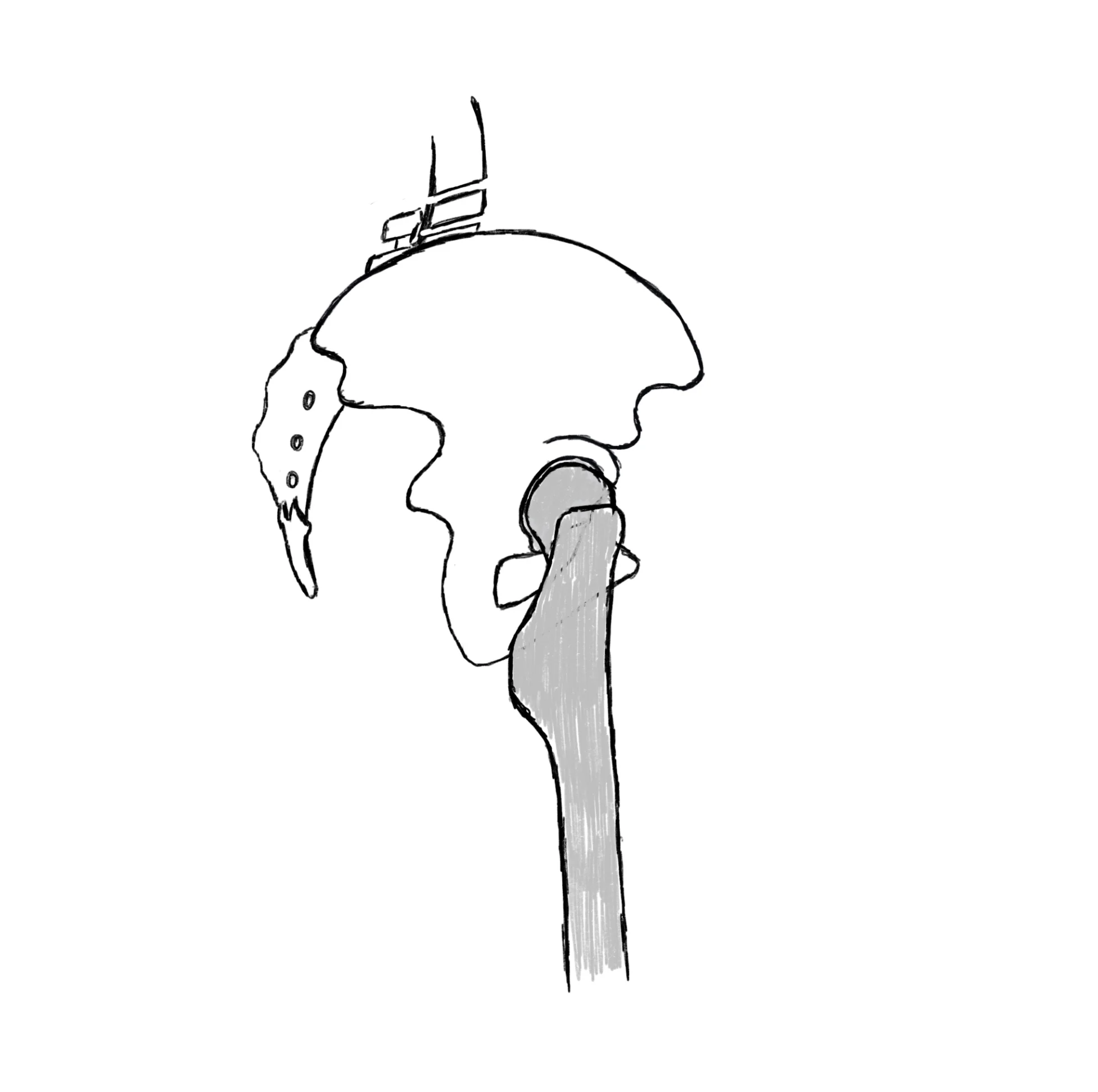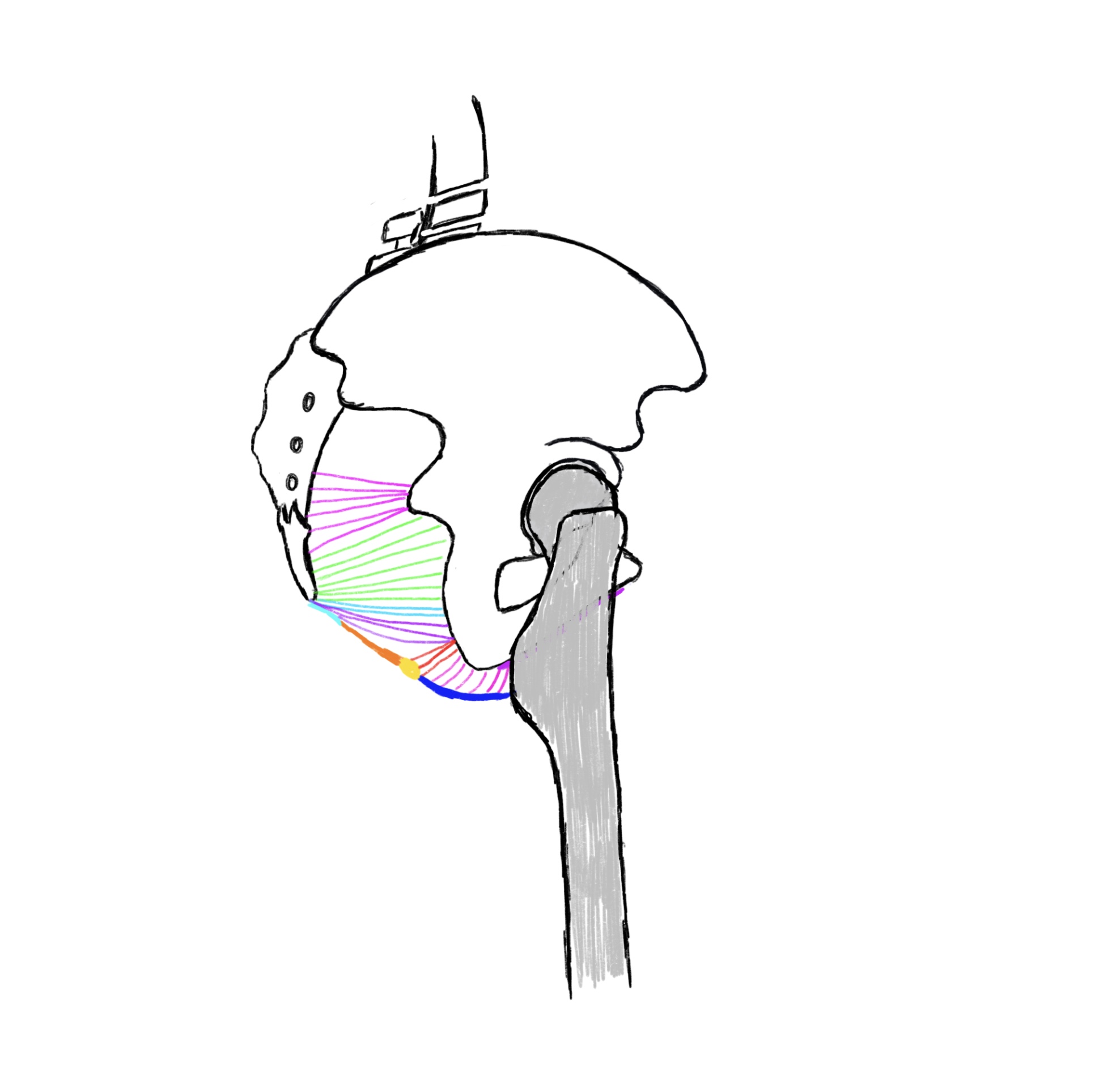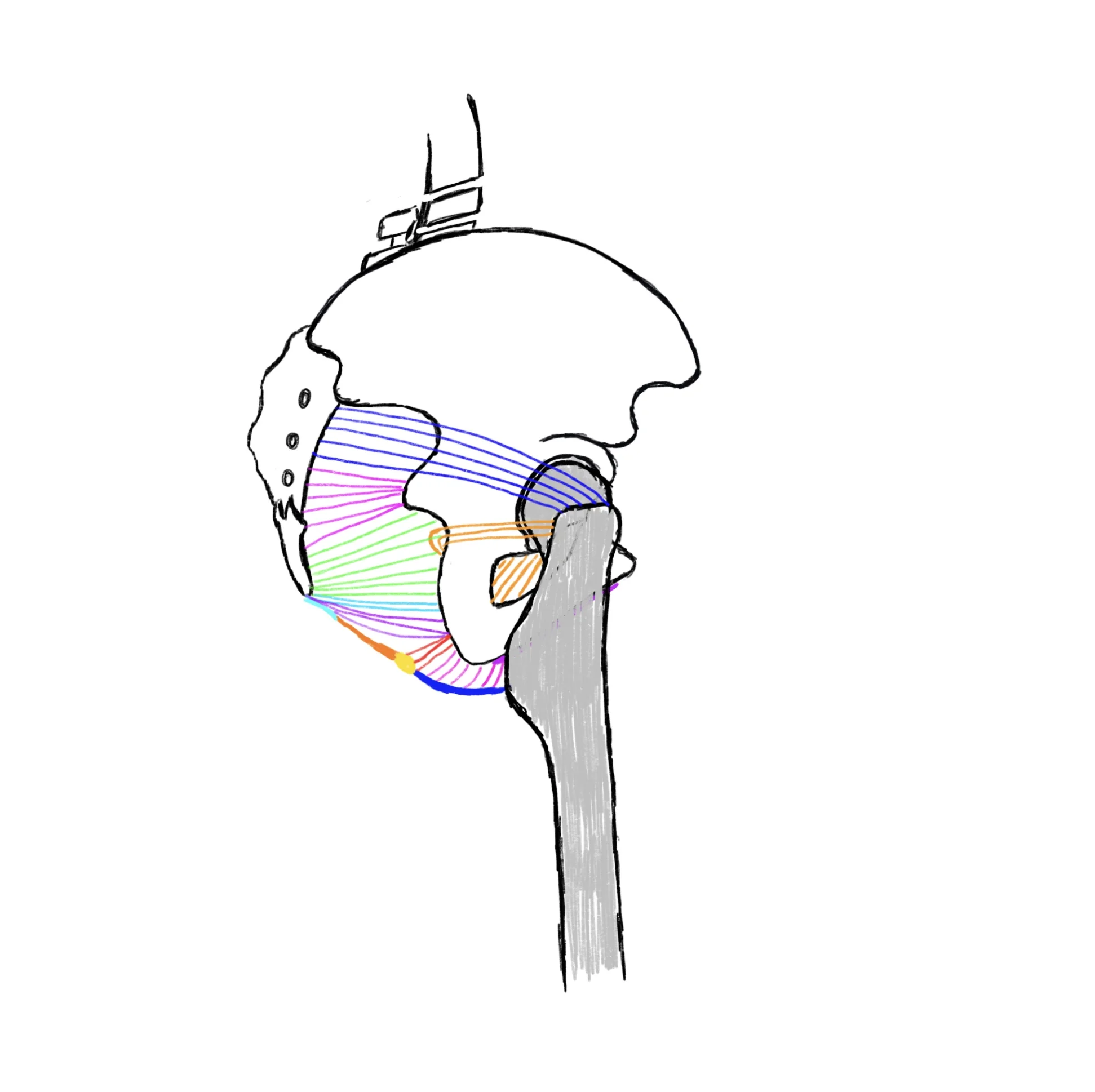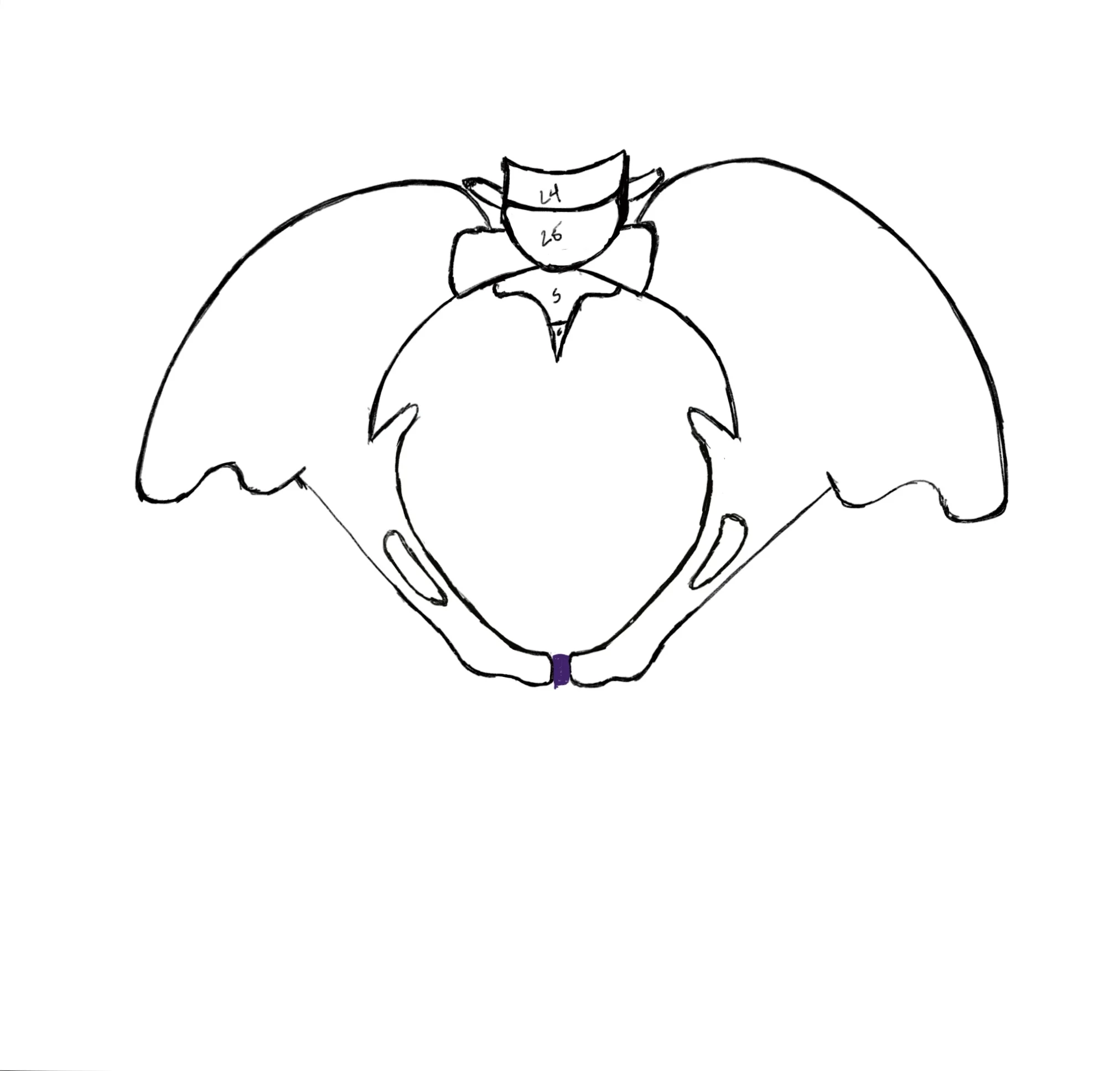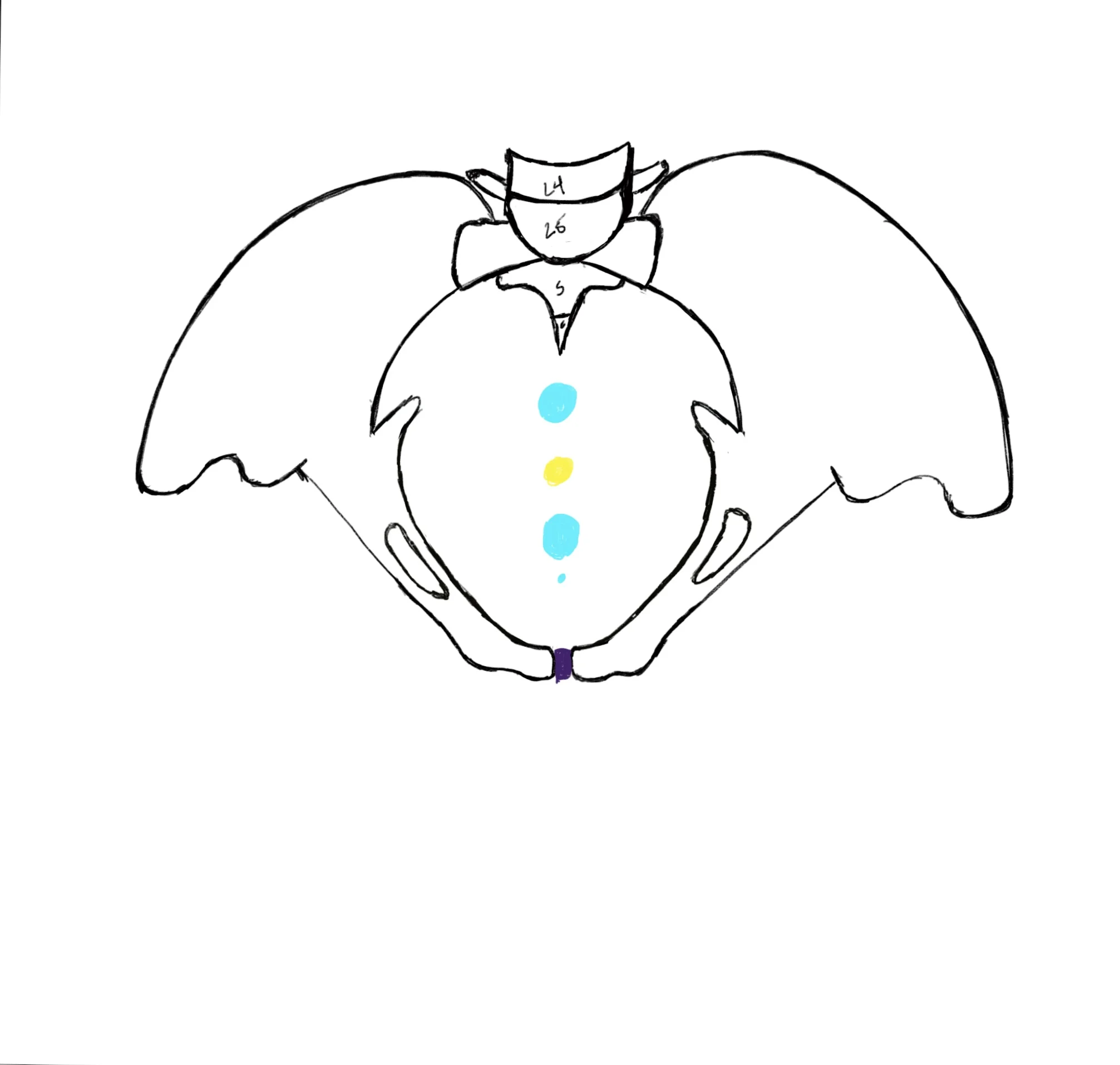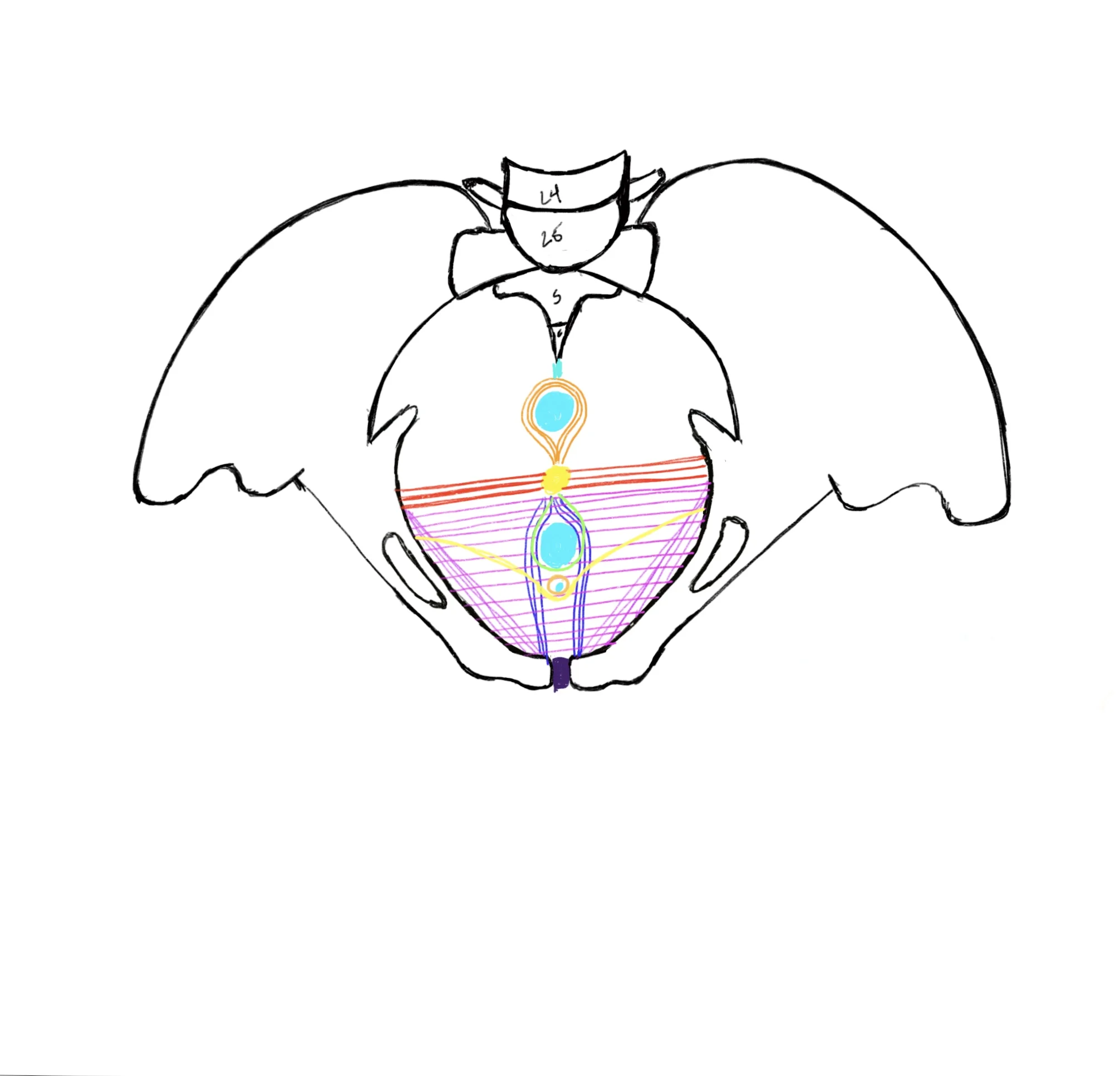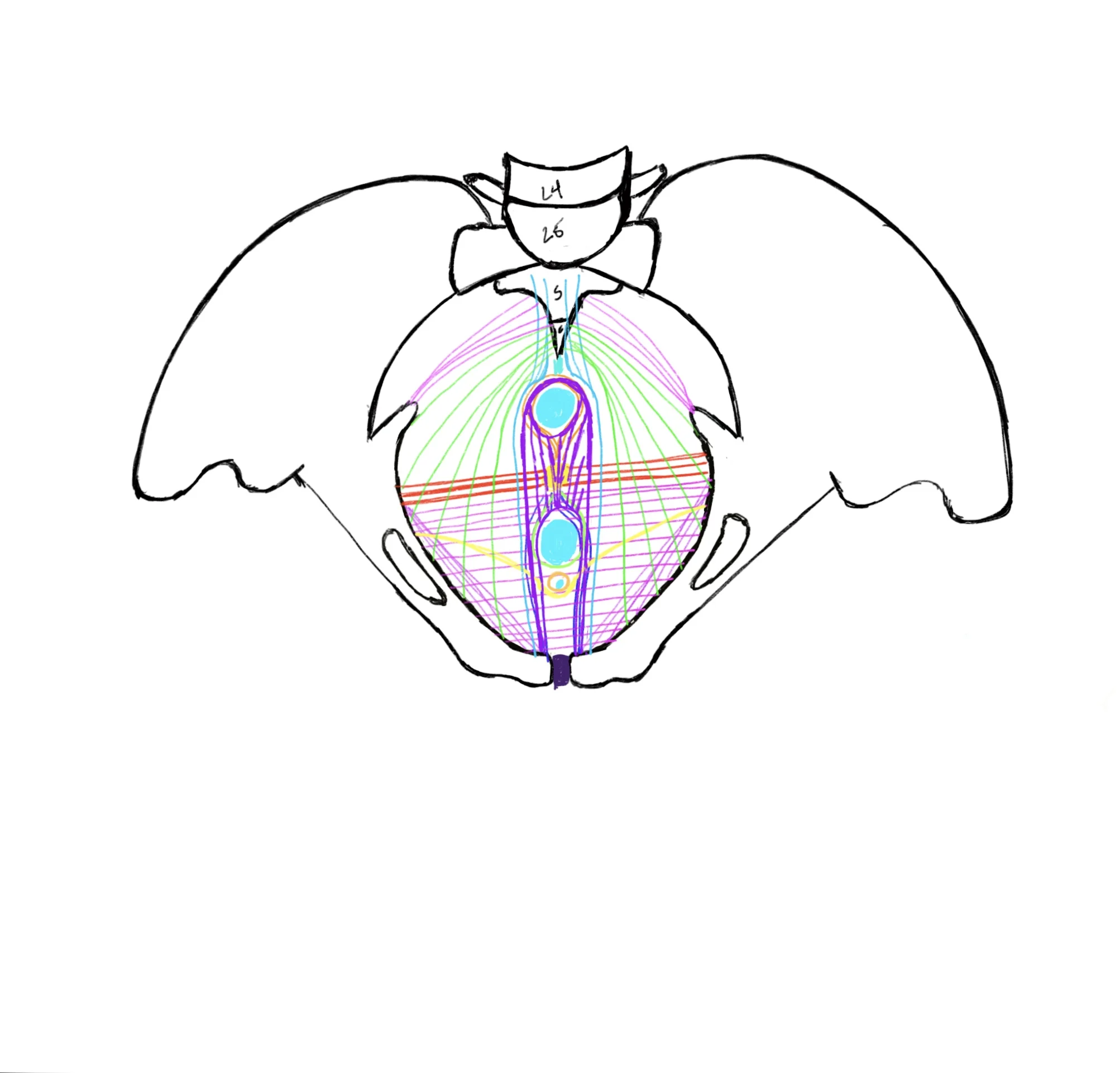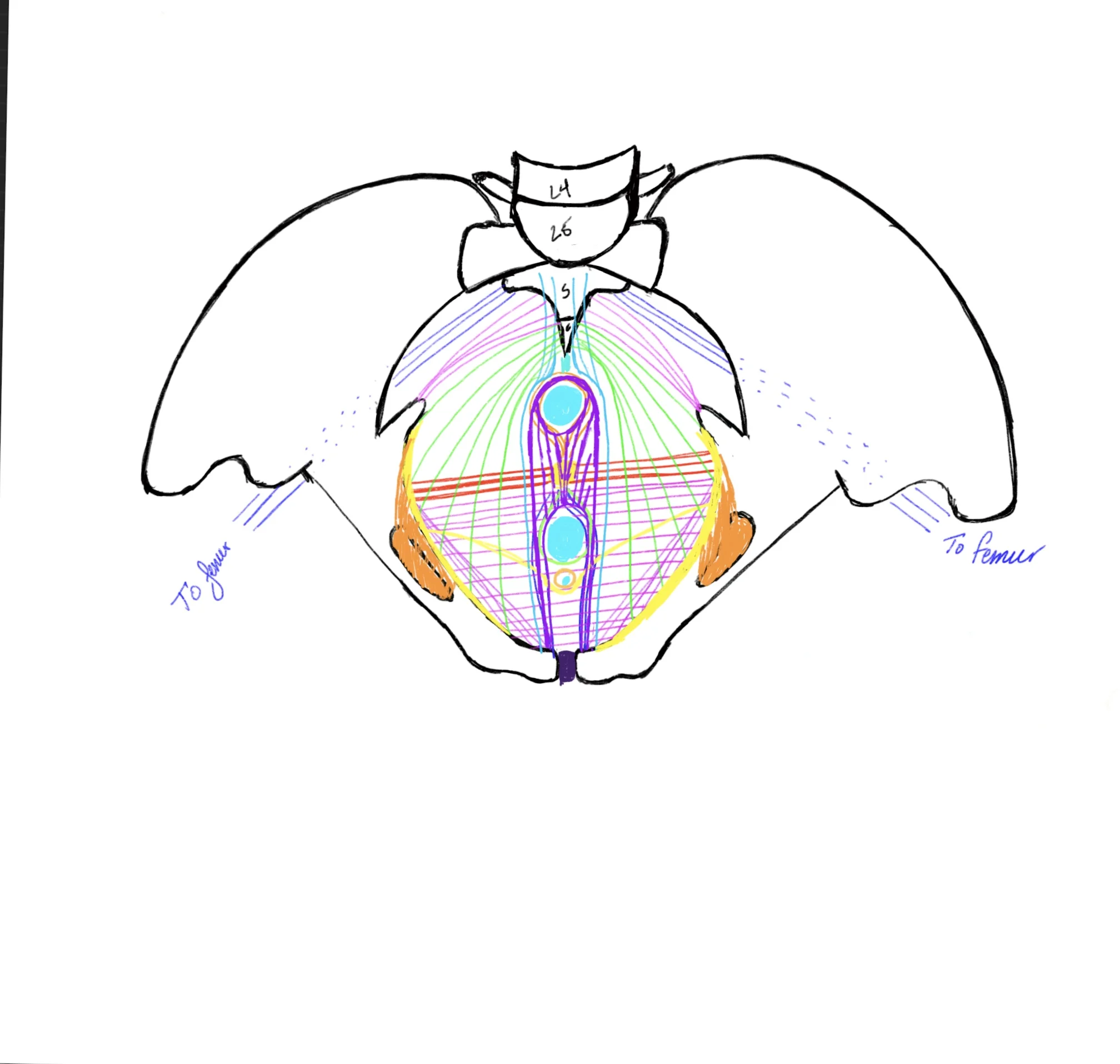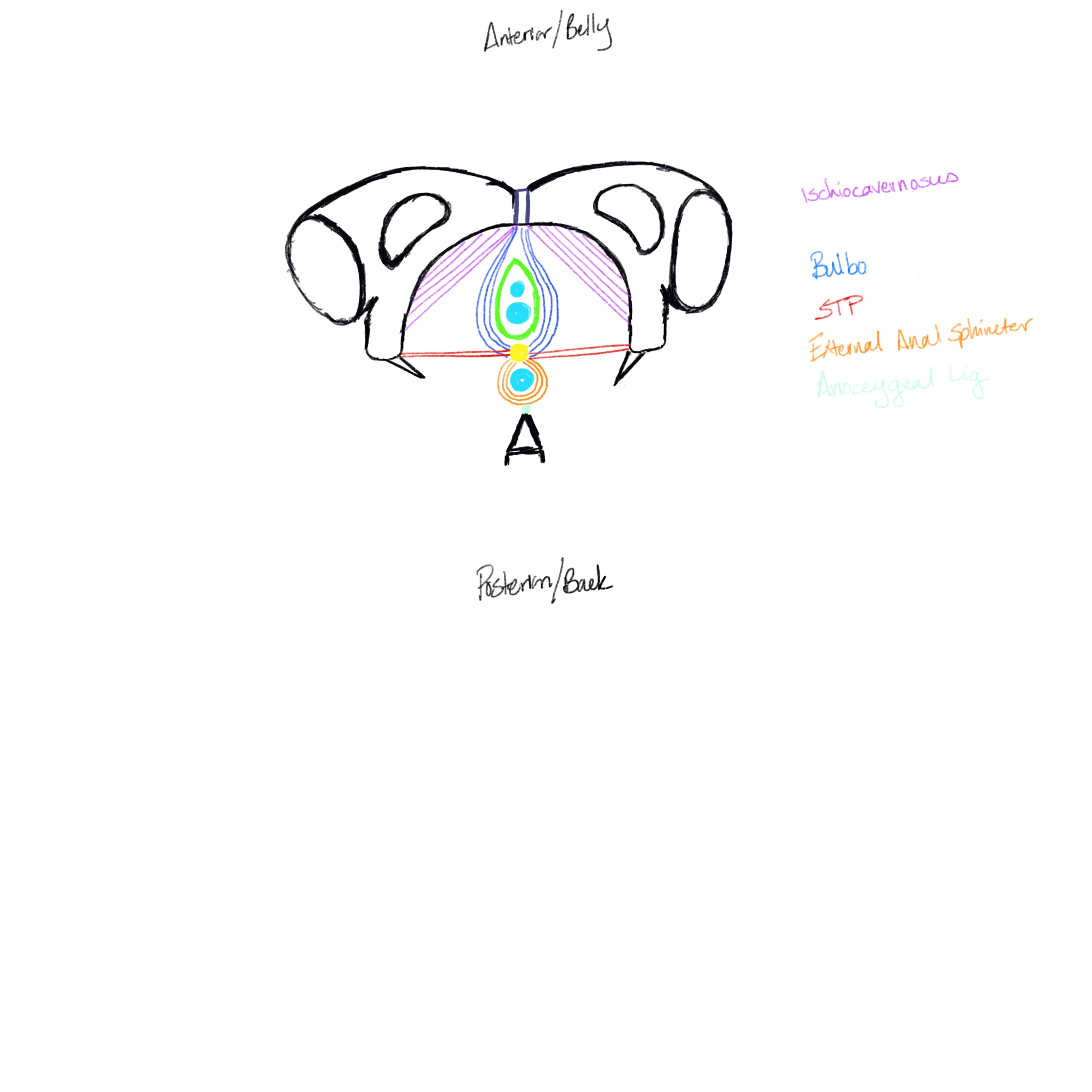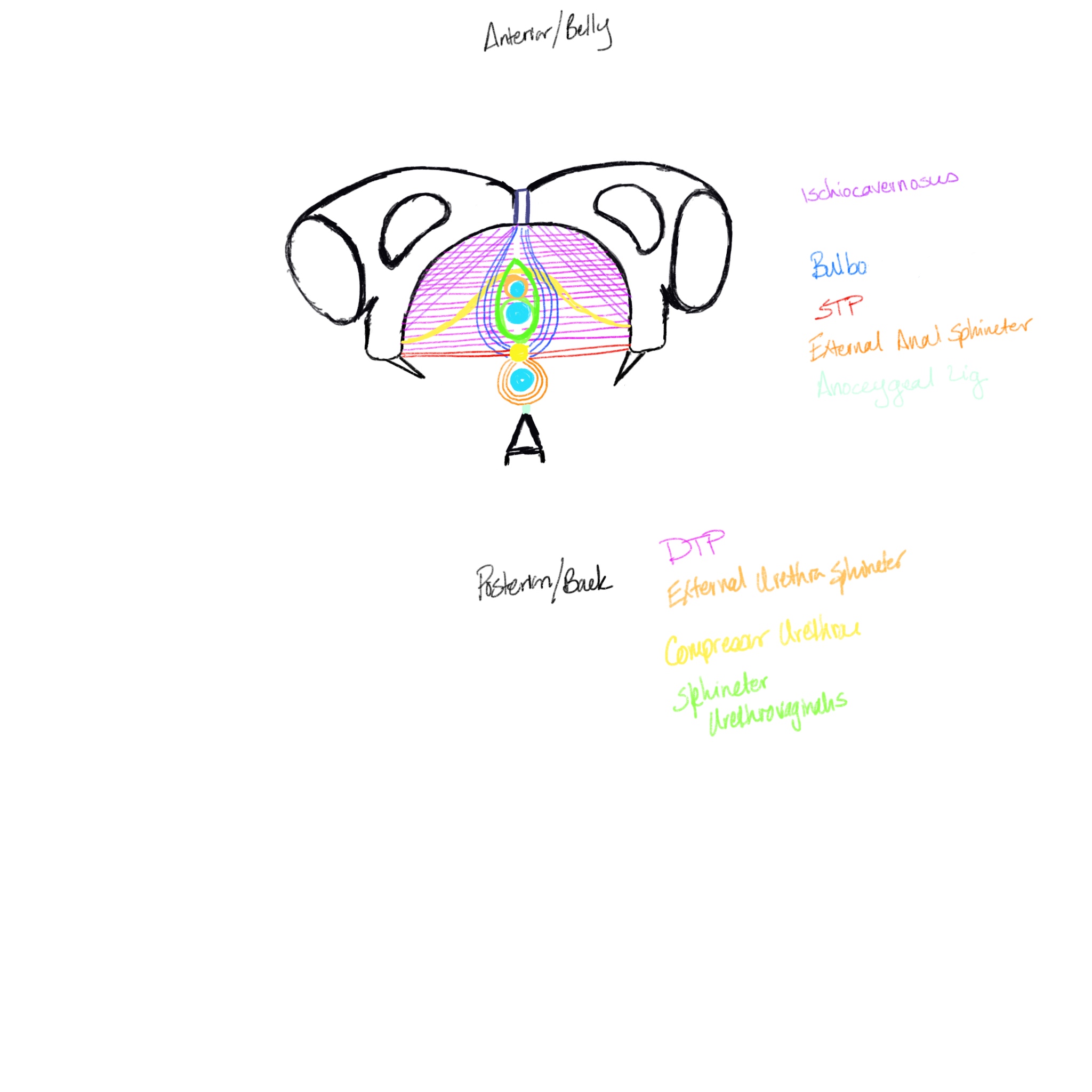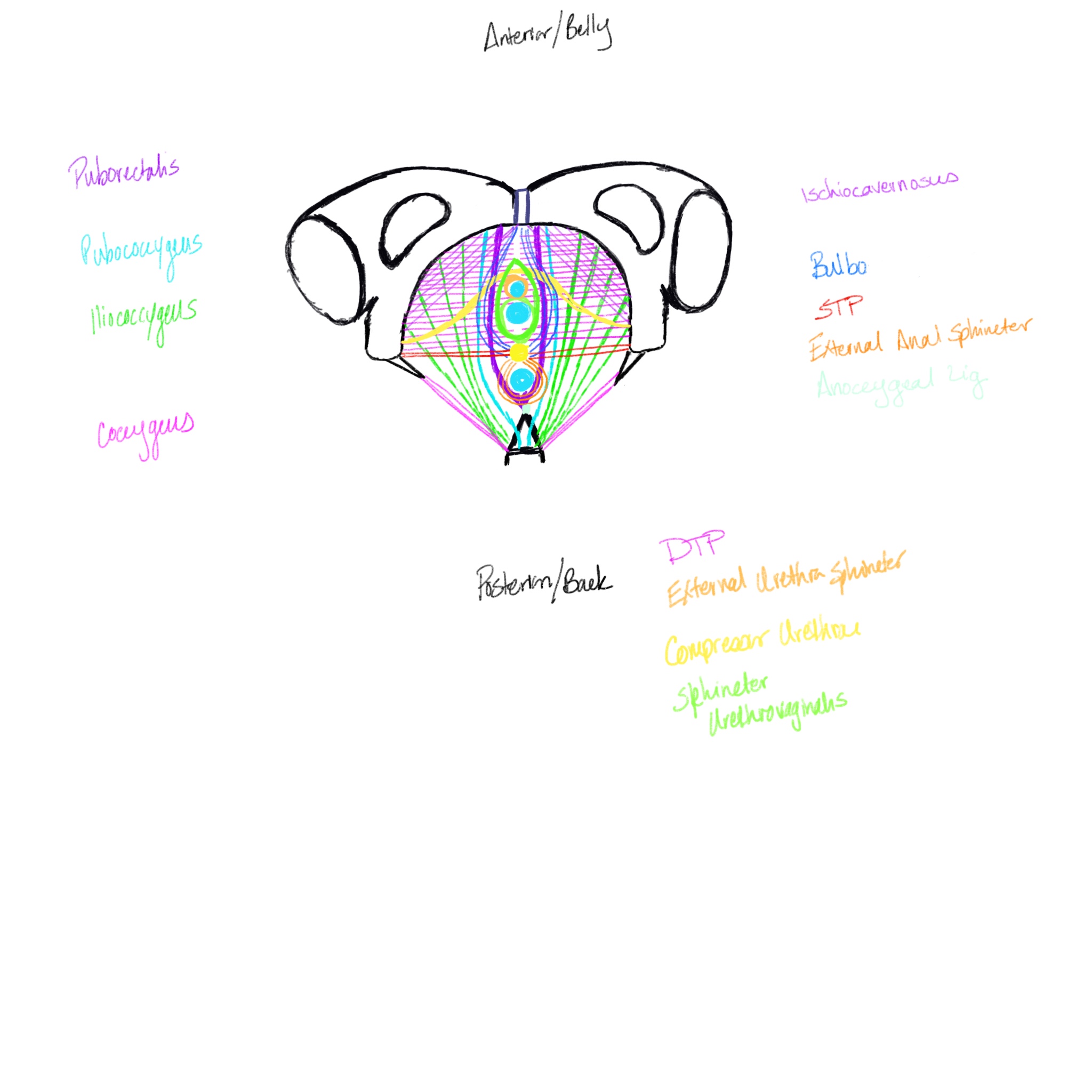Pelvic Floor: layer 3
Now to the deep layer. Its super supportive, broad and fan like.
This is a schematic of the female pelvic floor.
View from Above (looking down, from the diaphragm into the pelvic outlet)
The blue circles represent (from top to bottom), the anus, the vaginal opening and the urethra.
Levator Ani is a general term for a collection of muscles that make up much of the third layer. It includes:
Puborectalis
Originating from the pubic bone
Inserting in a loop around the rectum
It moves the rectum forward, increasing the anorectal angle (helping poop stay in), and draws the rectum up into the pelvis
Innervation from pudendal nerve (S2-4) and direct sacral nerves from S3 and S4
Pubovaginalis (Women)
Originating from the pubic bone
Inserting in a loop around the vaginal canal
It supports the pelvic organs
Innervation from pudendal nerve (S2-4) and direct sacral nerves from S3 and S4
Pubococcygeus
Originating from the pubic bone
Inserting at the coccyx
It supports the pelvic organs
Innervation from pudendal nerve (S2-4) and direct sacral nerves from S3 and S4
Iliococcygeus
Originating from the ischial spine and the fascia of the obturator internus
Inserting at the anococcygeal ligament and the coccyx
It supports the pelvic organs
Innervation from pudendal nerve (S2-4) and direct sacral nerves from S3 and S4
Coccygeus is the other deep layer pelvic floor muscle.
Originates from the ischial spine and the sacrospinous ligament
Inserts into the lateral border of the bottom of the sacrum and the upper aspect of the coccyx
It supports the pelvic organs, pulls the coccyx forward when working bilaterally, and can side bend the coccyx if working unilaterally
Innervation from sacral nerves S3 and S4
Female Pelvic Floor Diagram - Deep Layer
Male Pelvic Floor Diagram - Deep Layer
Pelvic Floor Layers, Side View
Pelvic Floor Layers, View from Above (looking down, from the diaphragm into the pelvic outlet)
Pelvic Floor Layers, View from Below (looking up at the pelvic floor, from between the legs)




